Plastic is a flexible and low-cost material that can be used for both domestic and commercial purposes. It is used in both domestic and commercial applications.
Plastic machines are in high demand. Various plastic manufacturing techniques have been developed to meet the needs of multiple applications. Engineering and commercial companies must remain in the loop. It is essential to stay informed about the latest developments in plastics and equipment.
Considerations when selecting a plastic machine
To be successful in the plastics industry, manufacturers must choose the best machinery. They should strive to achieve high-speed and high-efficiency operations.
Before choosing a plastic machine, you should consider the following:
Lead time
In all industries, it is essential to calculate lead times. Companies that rely on plastic machinery must determine how long it takes from conception to completion. They can then estimate the time to market for their plastic product.
It is essential to know when you will need the plastic products in order to select the best machine. It is necessary to understand that some machines can produce parts in a single day while others require days or months of setup for high-volume production.
Material
Material is a significant factor in choosing a plastic machine. The material’s physical properties will help factory owners narrow down their choices. The temperature, chemical resistance, and assembly are all variables that can influence the manufacturing equipment.
You should be aware that certain materials are better suited for specific plastic manufacturing machines. Plastic crusher machines can crush materials such as polyethylene terephthalate or high-density plastic polyethylene. Selecting a high-quality plastic crusher can improve product quality.
When manufactured correctly, polypropylene is also an injection molding plastic that can produce items with glossy surfaces. This material is used in the food industry to make food storage and packaging items because it doesn’t mix chemicals with the food. Other materials supported by injection molders include acrylic or plexiglass, polycarbonates, and polyetherimide.
It is essential to consider the material’s primary properties and the desired products when determining the best material for a plastic machine.
Form
Examining features such as tolerance requirements, internal characteristics, and geometrical complexity is essential to determine the most efficient and cost-effective manufacturing process. For some plastic products, an optimized design may be required to reduce production costs.
Volume/cost
When choosing plastic machinery, it is essential to consider the production volume. Some machines, such as those powered by injection molding machines for plastic, require significant upfront costs regarding setup and tools. They produce cheap essential parts.
Low-volume manufacturing processes such as CNC machines have lower initial costs but higher costs per part due to slower cycle times and less automation.
Molds
Molds are used to determine the pattern of the material. Plastic molding is the process of pouring molten material into a container, where it will harden in a custom-made shape. First, you can design your desired model yourself or hire an expert to do it for you. After completing it, please ensure the mold can fit into the plastic machine.
Plastic machinery is dependent on the structure that you are producing. These molds can be made of various plastic plates, blocks and inserts, and metallic components. To ensure the plastic machinery chosen is suitable, it is important to test multiple molds.
Plastic machines types
Plastic machines are available in a wide range of types. A wide range of equipment, from a plastic molder to shredding and recycling, is available today. After determining the manufacturer’s purpose and annual goals, it’s time to examine the plastic molding machines suitable for the industry.
The following are the main categories of plastic machines used today:
Extrusion machine
Plastic extrusion machines with a predetermined shape extract molten plastics from an extrusion port. Material like nylon, polypropylene, and polystyrene are dyed to give them a seasonal shape. Later, the parts are cooled to keep their shape. Extruders produce parts with a constant cross-section, such as drinking straws, pipes, and curtain tracks.
Plastic extruders are in high demand across many manufacturing segments, including healthcare, automotive, and packaging. The global market for this machinery in 2019 was worth USD 6.303 million. The market is expected to reach USD 7,930.4 by 2027. This represents a 4.5% CAGR from 2020 to 2027.
Benefits
- Thermoplastics are capable of being repeatedly hardened and melted.
- The manufacturing process is flexible.
- This allows post-extruder manipulator.
Disadvantages
- Plastics can expand and change the dimensions of products.
- The process is limited in the types of products that it can produce.
Injection molding machine
For mass production, injection molding machines are employed. The object to be molded is placed into a barrel, heated, and then blended. It is then injected into the mold cavity. The liquid plastic cools down and takes on the shape of a cavity.
Injection molding machines are becoming more and more innovative. This, combined with the increasing power of these machines, has led to a wide range of options being available on the market. According to Fortune Business Insights, the global injection-molded plastics market will grow from USD 357.34 billion in 2021. The market is projected to grow from USD 357.34 billion in 2010 to USD 476.46 by 2028. This represents a 4.2% CAGR.
Benefits
- This allows for producing large quantities of complex and uniform parts.
- More than 25,000 engineered products are compatible with the processing technique.
- The cycle can last between 10 and 120 seconds. This allows for massive production.
- Scraps can also be reground and melted for reuse.
- This product is highly repeatable and relatable.
Disadvantages
- Lead times are longer for complex molds.
- Initial costs are higher for custom-made tools.
- Costly design changes
Plastic recycling machine
Recycling machines can be used to shred plastic or other materials. They reduce the size so that other plastic machines can recycle them. They turn the waste into pellets, which can be used in molding. The waste can be recycled by producing profiles, injection molding, and plastic sheets.
Maximize Market Research has recently evaluated the potential market for recycling machines. The total revenue is expected to grow 5.40% between 2022 and 2027. By 2027, USD 389.9 million will be reached. Recycled plastics are the best way to reduce plastic pollution and improve eco-efficiency.
Benefits
- Pellets can be used to make a variety of products.
- Landfills can handle less plastic waste.
- Pellets are lightweight and easy to handle.
Disadvantages
- Some manufacturers’ budgets are not in line with this.
- The recycled pellets could be low-quality.
Blow molding machine
Blow molding machines are used to manufacture hollow thermoplastic products. Melting the plastic first creates small coupons. Then, they are heated in a mold until the plastic becomes liquid and air-filled. Air pressure pushes soft plastic out of the mold, which forms like a balloon. The plastic retains its shape when it cools, and the part can be released.
Blow molding machines are used to produce soft drink bottles and plastic cans. They also make wide-mouthed jars and containers. Allied Marketing Research shows the market is expected to reach USD 6,878.6 million by 2030. This represents a CAGR between 2021 and 2030 of 3.8%.
Benefits
- It uses a cost-effective production method.
- The material is used to make a wide range of products.
- This allows for a significant increase in production capability.
- This allows for quick production and high-volume outputs.
Disadvantages
- Production is heavily dependent on petroleum.
- The process needs to be streamlined, and it is hard.
Products Examples of Injection Molding
Let’s now examine some examples of parts made by injection molders.
Injection Molding Example #1 – Snap Fits
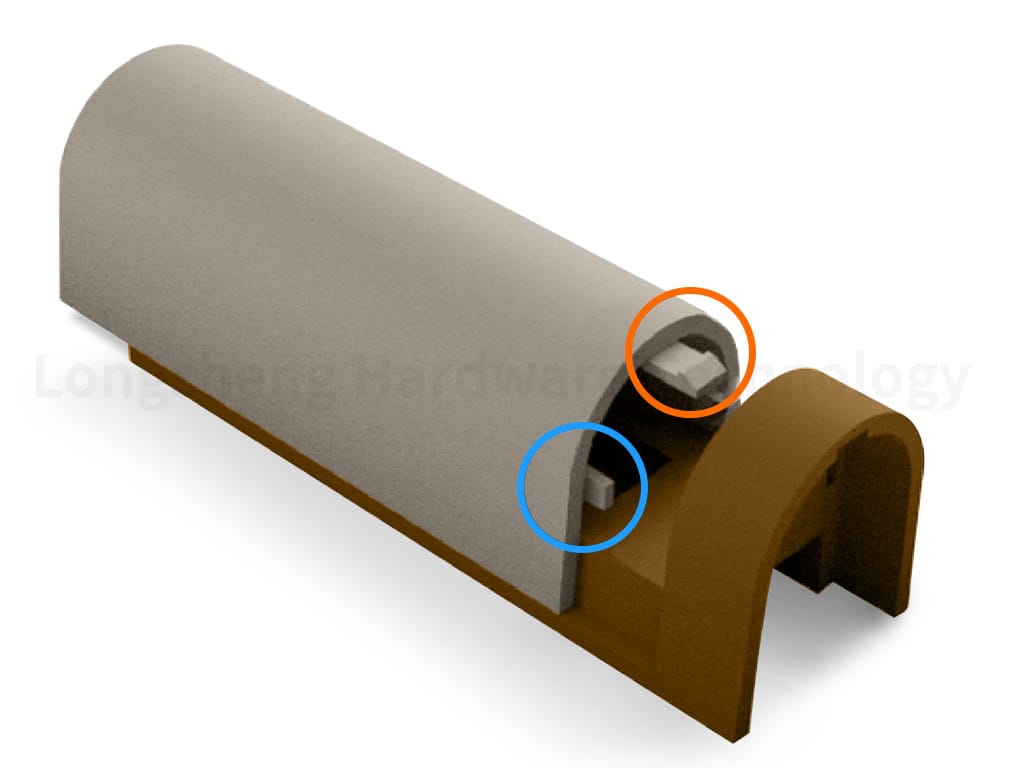
The plastic used in this product is made by injection molding. Plastic parts are often made with them to maintain the aesthetics of a product. Injection-molded snap-fits are more flexible and can withstand the stresses of assembly and disassembly.
Snap fits made by injection molding allow the design to be returned to its original position without stress after the engagement with the mating component. If replacing the snap-fit to its original position is impossible, then an injection-molded snap can be left under tension. This stress must be less than the maximum the material design allows, usually 50% of the elastic limit.
With injection molding, engineers can create snap-fits that are easy to snap together and pull apart with a simple pull or push action.
Injection Molding Example #2 – Living Hinges
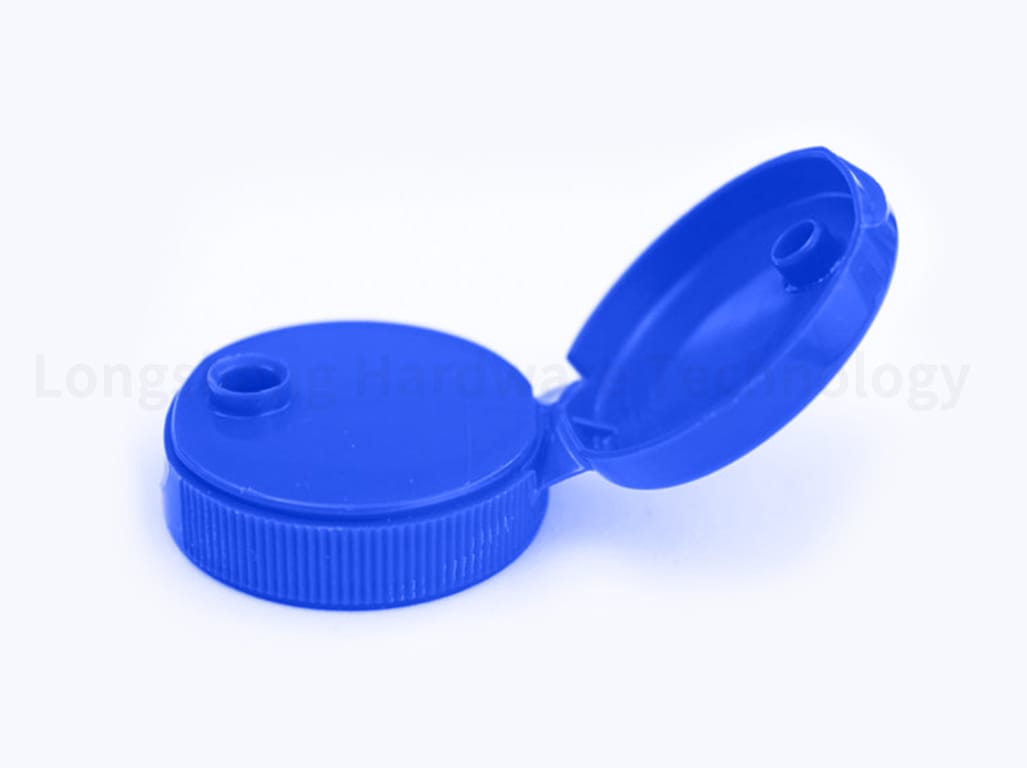
Injection molding offers the most cost-effective and efficient hinge manufacture, especially when volume is an issue. Manufacturers also use injection molding to produce living hinges for various reasons.
The quick turnaround is one of the most important. This process is faster than any other plastic production method. Living hinges made using this method have a higher finish than those produced by CNC machining.
Injection Molding Example#3 – Threads
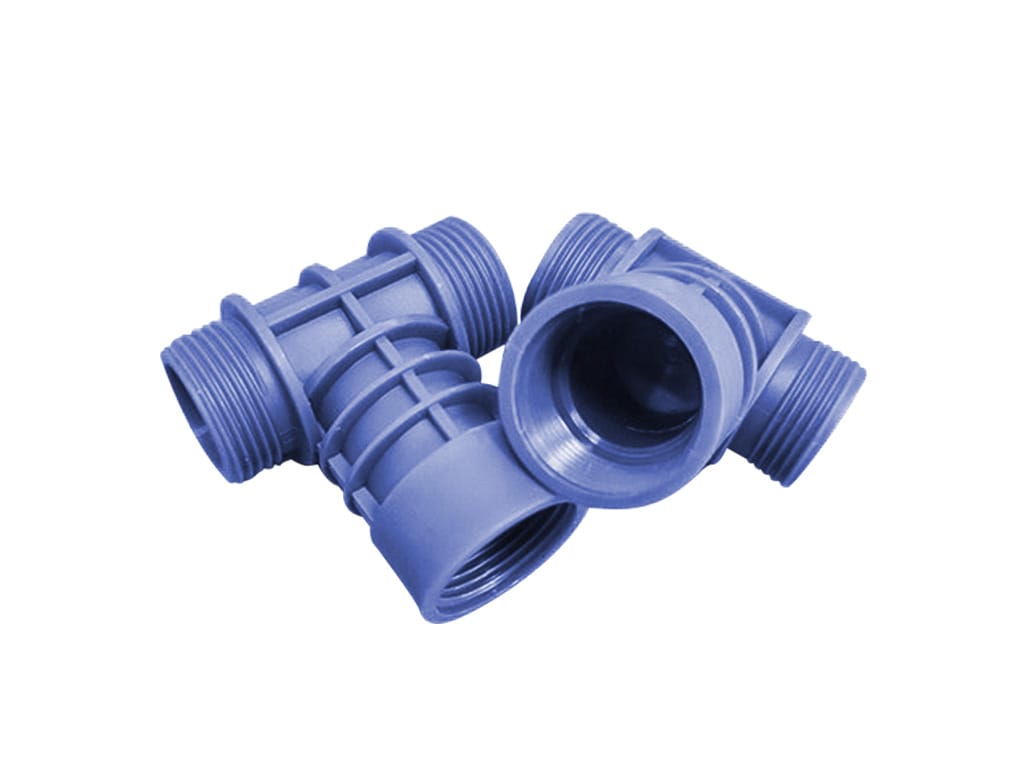
Plastic injection molding makes threads, which you can see on plastic bottles and containers. Both internal and external threads can be made by manufacturers using injection molding.
Injection molding is used to create external threads. The tool must have half the thread in the plastic core and the cavity. It is also easier to separate the plastic from the mold tool. The thread will have a thin joining line to indicate the meeting point between the two halves.
A different method is required to obtain internal threads. This process involves a removable threaded cavity or core. The manufacturer then places the threaded core in the mold tool, injecting a polymer into the tool for the process. The injected polymer is then set to create the thread.
Injection molding Example#4 – Threaded Inserts
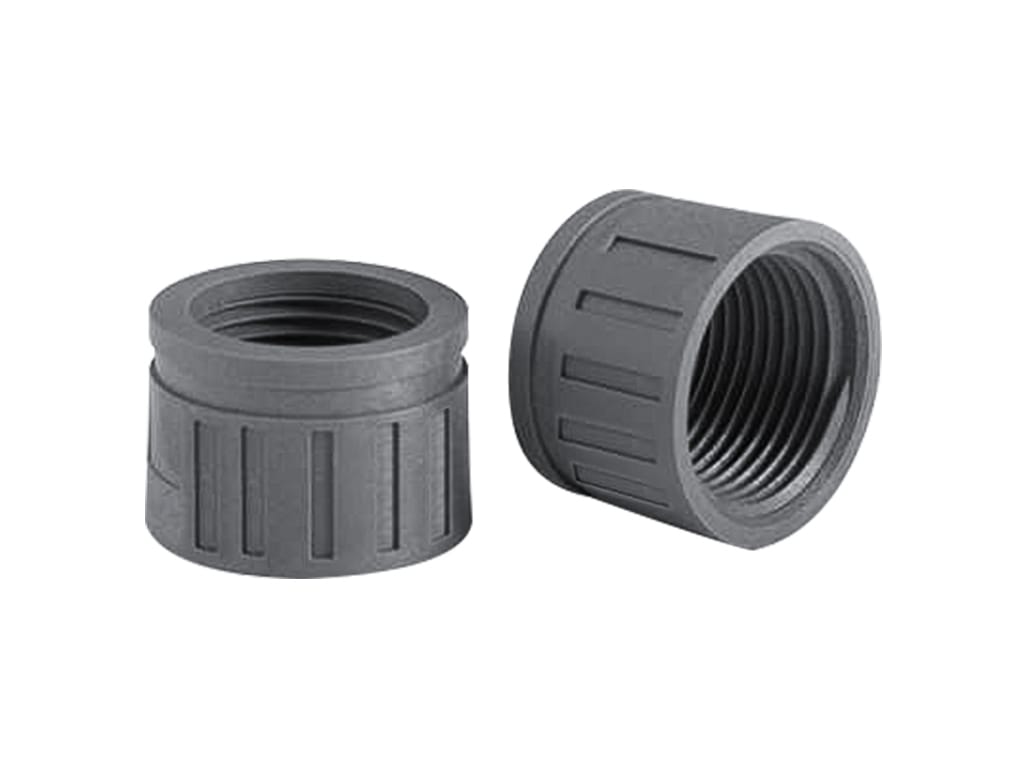
Injection molded threaded inserts provide reusable threads. It also preserves the integrity for the entire duration of the application. They also prevent thread stripping by allowing for the proper installation of torque to the screw.
The two most common plastics engineers use for threaded embed installations are thermoplastics and thermosets. Thermosets are made up of polyester resins such as urea and epoxies. Plastics of this type are also heat resistant and durable. Once formed, it is impossible to reform these plastics using heat and pressure because the chemical changes are irreversible. This type of plastic can be used to make inserts that are molded in, self-tapping, or press-in.
On the other hand, thermoplastics are solid at average room temperatures but melt at higher temperatures. This category includes ABS, polyamides, polycarbonates, and polyvinyl chloride. Engineers use thermoplastics to make heat/ultrasonic, press-ins, and molded or self-tapping parts.
Injection Molding Example #5 – Press Fittings
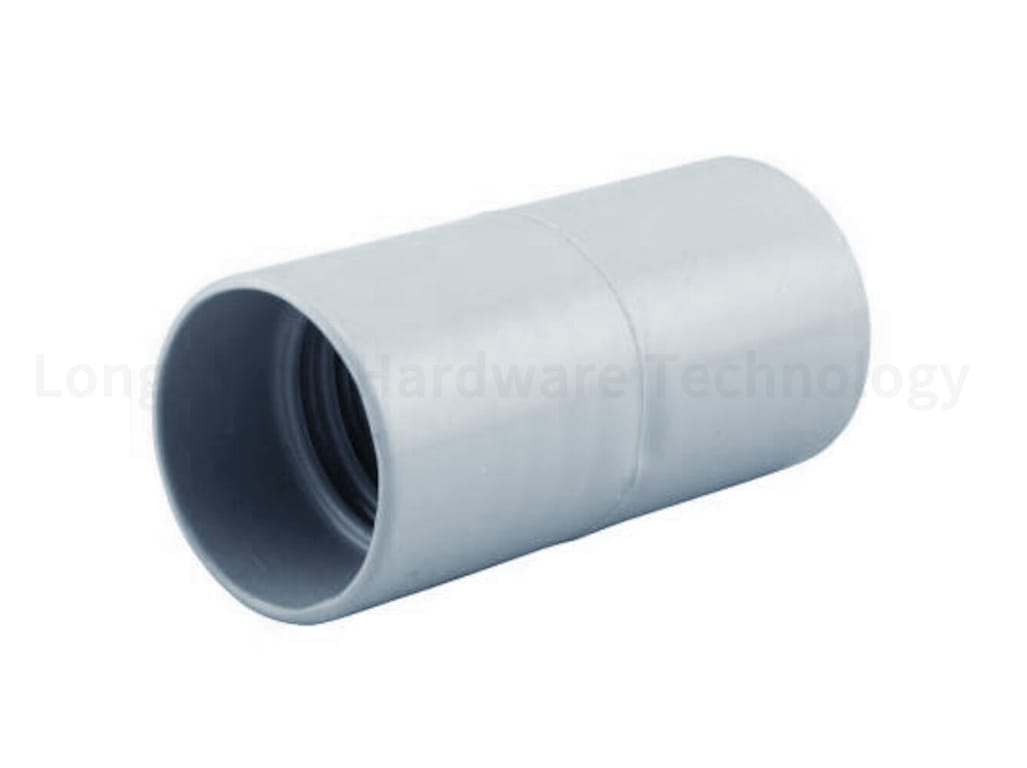
Injection molding is a great way to ensure a clean, timely assembly. Inserts molded into the press fittings are a great way to ensure their success. These inserts provide excellent hold between the molded plastic insert and insert.
Injection Molding Example#6 – Living Caps
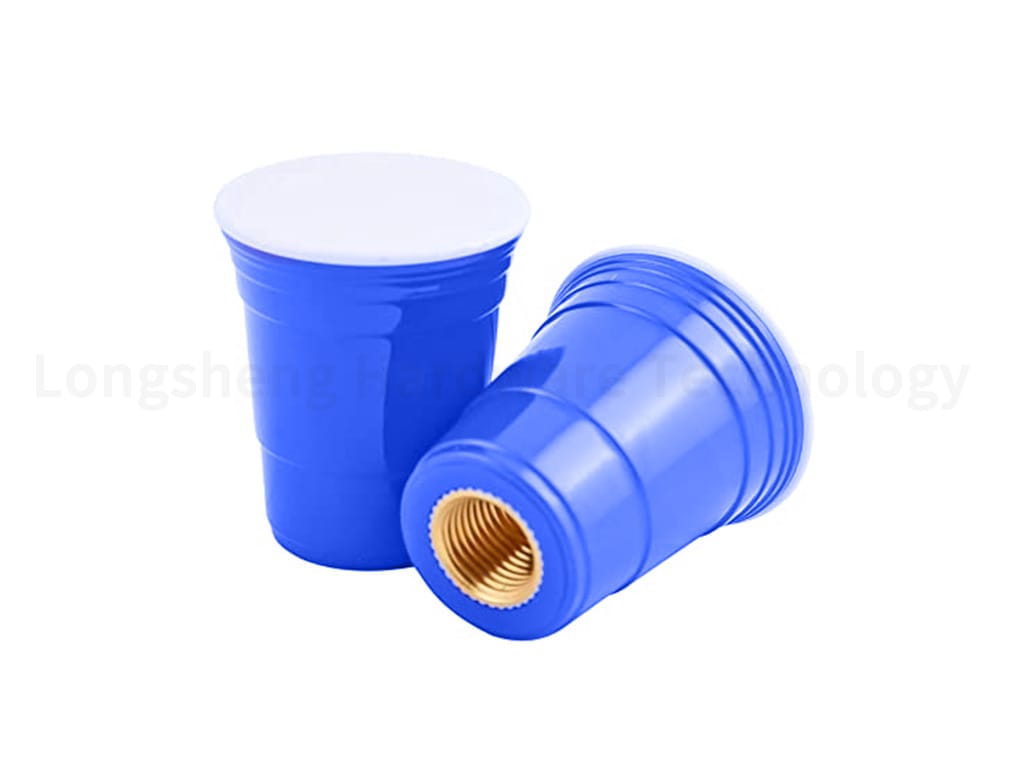
A living cap is made of an extension of its parent material. Injection-molded living caps are highly durable. They can bend 180 degrees, or more than one million times, without breaking.
A living cap is also a uniform piece that does not require any assembly. Here, there are four types of caps: straight or flat, child-safe, double or triple, and butterfly.
Injection Molding Example #7 – Equipment Housings
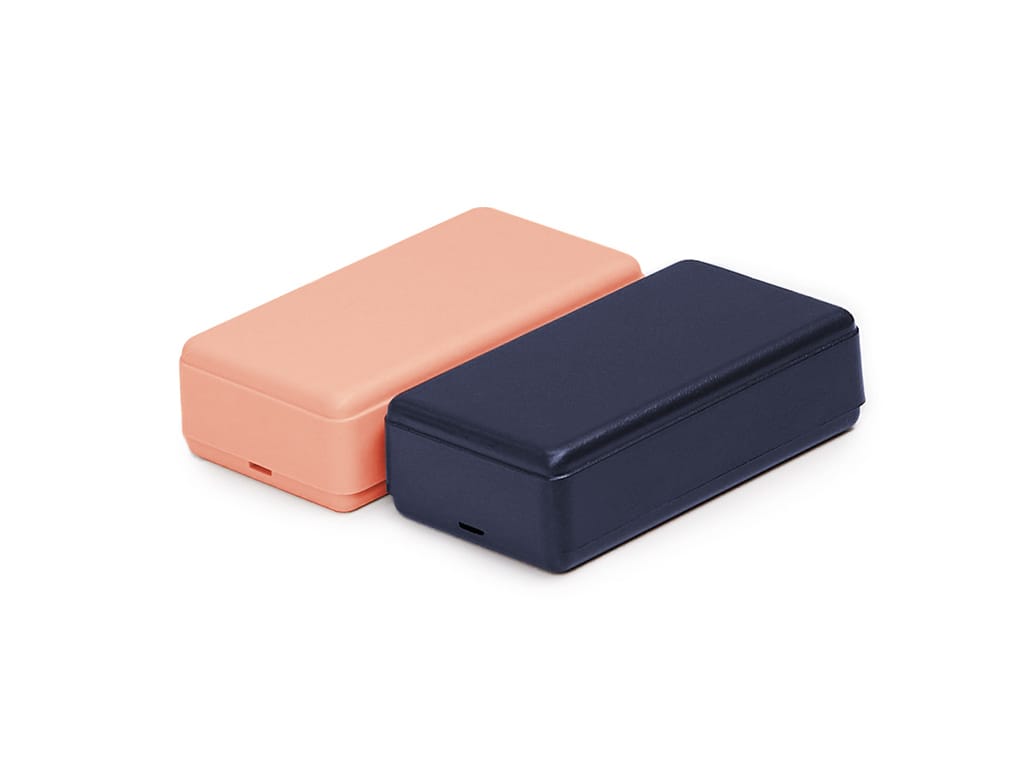
Protective casings, often made of metal or plastic and offering protection to the product they house, are called equipment housings. The injection molding method is the cheapest way to make equipment housings. This is particularly true when manufacturers are looking to produce equipment housing in large quantities. Manufacturers use this process to produce housings for various equipment, from medical equipment to computer electronics.
The housing is easily disassembled, making accessing the product easy.
Injection Molding Example #8 – Insulators
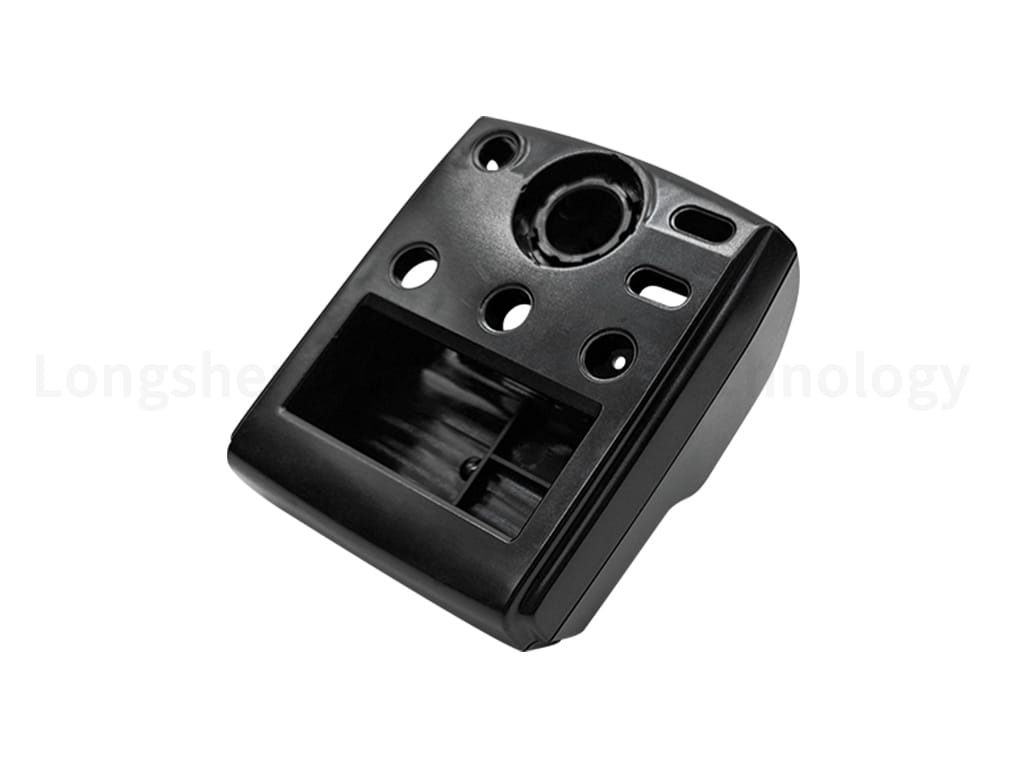
Insulators are another application of injection molding. Injection-molded components are often used in electronic devices. These parts act as insulators and stop current flow by separating electrical conductors.
Plastics such as PC and ABS are used to manufacture electronic housings, light switches, and other electrical components.
Injection Molding Example#9 – Deck Fasteners
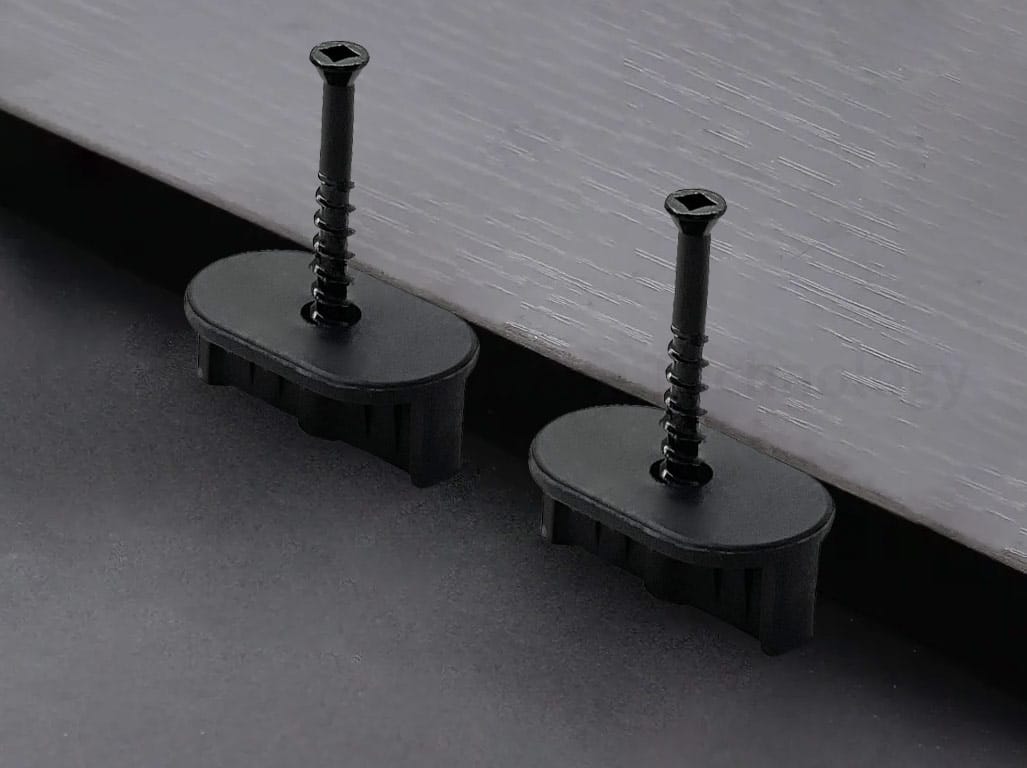
Deck fastener manufacturers use injection molds to coat stainless steel inserts in polymer materials such as polypropylene or polyethylene. This combination also makes deck fasteners resistant to UV rays and highly durable, regardless of the climate conditions in a particular place.
Injection molded deck fasteners allow deck wood to expand and contract freely.
Injection Molding Example#10 – Dashboard
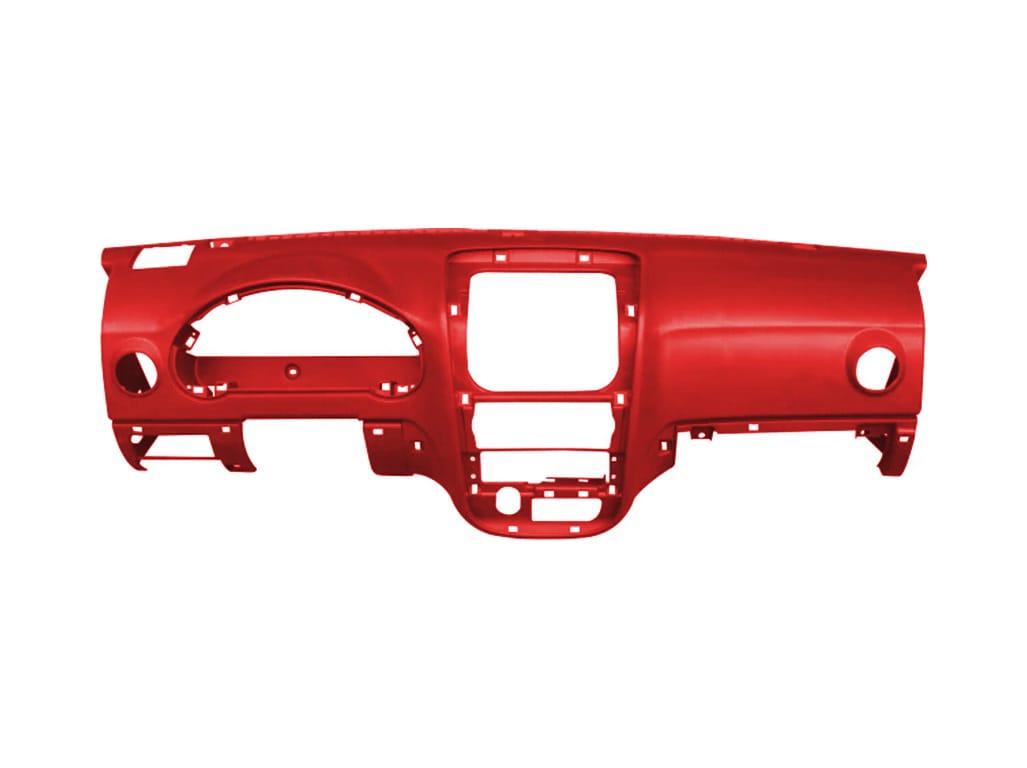
The dashboard is a standard part of car development. This part is more accessible to produce with injection molding. This part is easier to make with structures such as airbag frames and interior trim panels.
Injection molding produces auto dashboards in various ways, including Gas-assisted injection molding, Sequence valve injection, and composite injection. Instrument panel insert injection is another process. Two-color injection molding and double injection are also available.
Injection Molding Example#11 – Cell Phone Cases
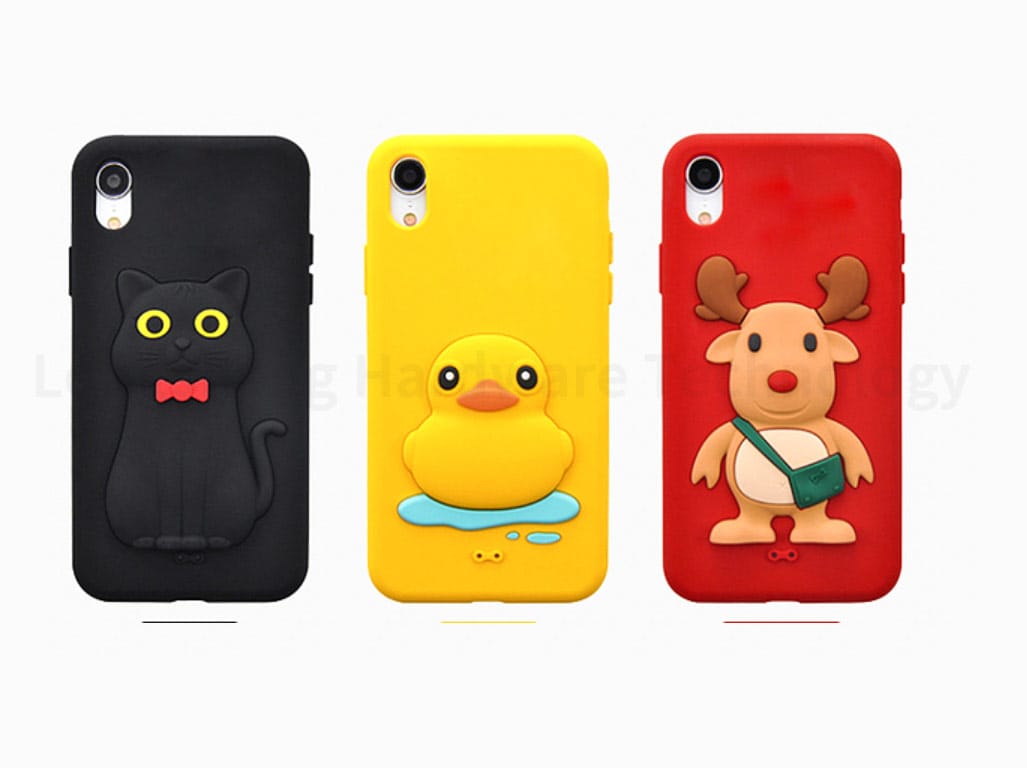
Cell phone cases are a popular application of injection molding. Polycarbonate, polyurethane, and polypropylene are this process’s most popular plastic materials. These materials can also be used to make solid cases for mobile phones.
Try LongSheng Now
All uploaded information is secure and confidential.
Injection Molding Advantages Injection Molded parts
Manufacturers use injection molding for many different reasons. Here are some of them.
Can Work With a Wide Variety Of Materials
Today, engineers use over 50 different materials for injection molding. These options make it easier to find the material that has the characteristics you need. Injection molding also allows engineers to combine materials to create a part with the attributes of both materials.
Saves Time
The duration of an injection molding cycle can range from ten seconds up to two minutes, depending on the complexity and geometry. It saves time as you can make several copies of the same part within an hour for a low cost.
Low-Waste
Waste is virtually nonexistent with injection molding since excess material or leftovers can be reused. You can reduce production costs by simply regrinding and melting the material again.
Highly Accurate
Injection molding produces highly accurate parts, regardless of the geometry’s complexity. It is possible to achieve a tolerance of 0.125mm – 0.500mm using this process. To accomplish this over time, you will need to consider weld lines, wall thickness, corner transitions, and boss and rib design.
Large Volume Production
Making several parts without maintaining your tooling is a significant advantage of injection molding. This is particularly true if you use complex tooling, which can be used for over 100,000 cycles without requiring a retool.
Industrial Applications for Injection Molding
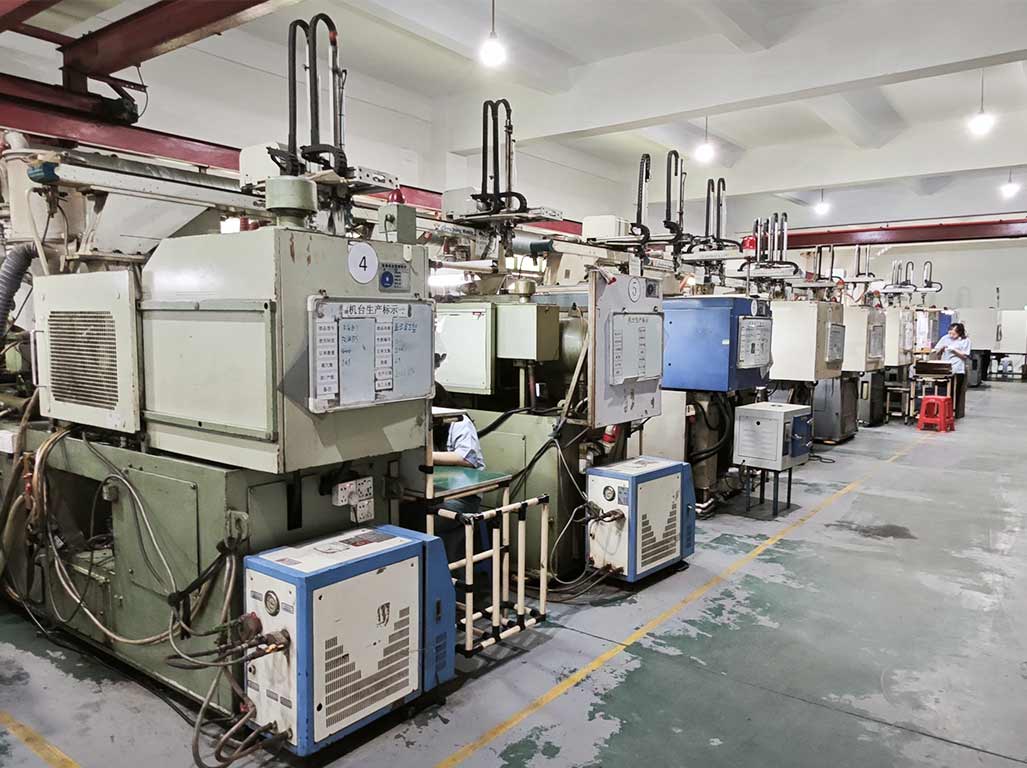
Most products use plastic parts. It is due to the cost-effectiveness, tensile strength, chemical stability, and wear resistance of plastic parts, as well as their insulation properties, thermal conductivity, and good thermal insulating qualities. There are many examples of injection molding in different industries. The major industries include:
Automotive
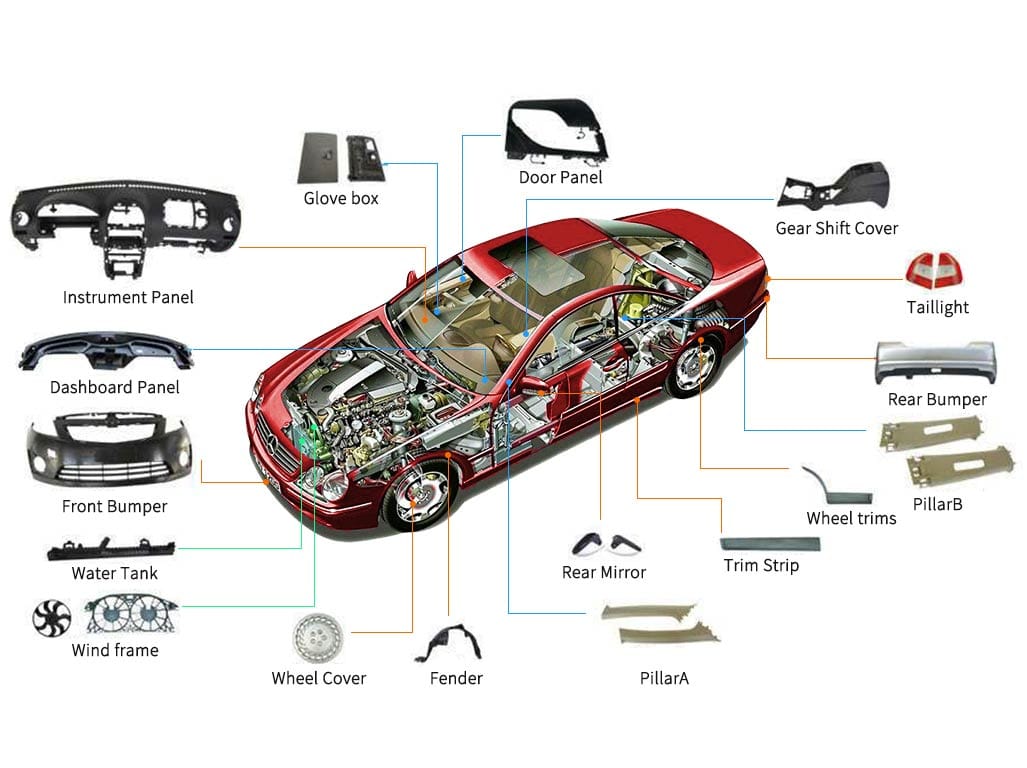
Injection molding is used to make parts for automobiles and machines. This industry uses these plastic parts for many reasons. The most important is their durability. Plastic parts are resistant to wear, biodegradation, and degradation. They can last for a very long time.
Plastics are also lightweight compared to most other materials. The lighter the car, the better for fuel economy.
Plastic parts are also resistant to corrosion and UV exposure. They are ideal for automotive parts such as radio controls, cupholders, bumpers, and dashboards.
Medical
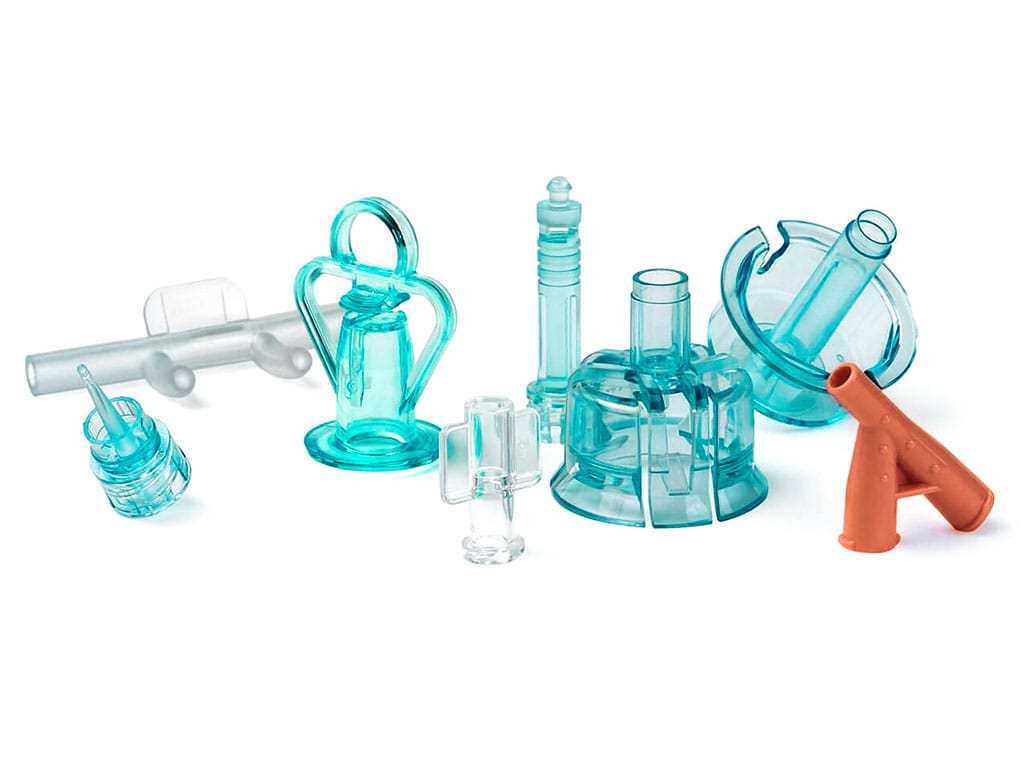
Injection-molded plastic components constitute a significant part of the medical industry. The medical industry is often in need of large quantities of precision parts. It also values bulk production, as most plastic products are disposable and single-use, preventing diseases and germs from spreading.
This industry also produces single-use plastic syringes, as well as IV connections. Biocompatible products like dental implants, prosthetics, handles, and triggers that can be sterilized are also notable. Medical Grade Plastics include silicone, polypropylene polyethylene, and ABS.
Electronics
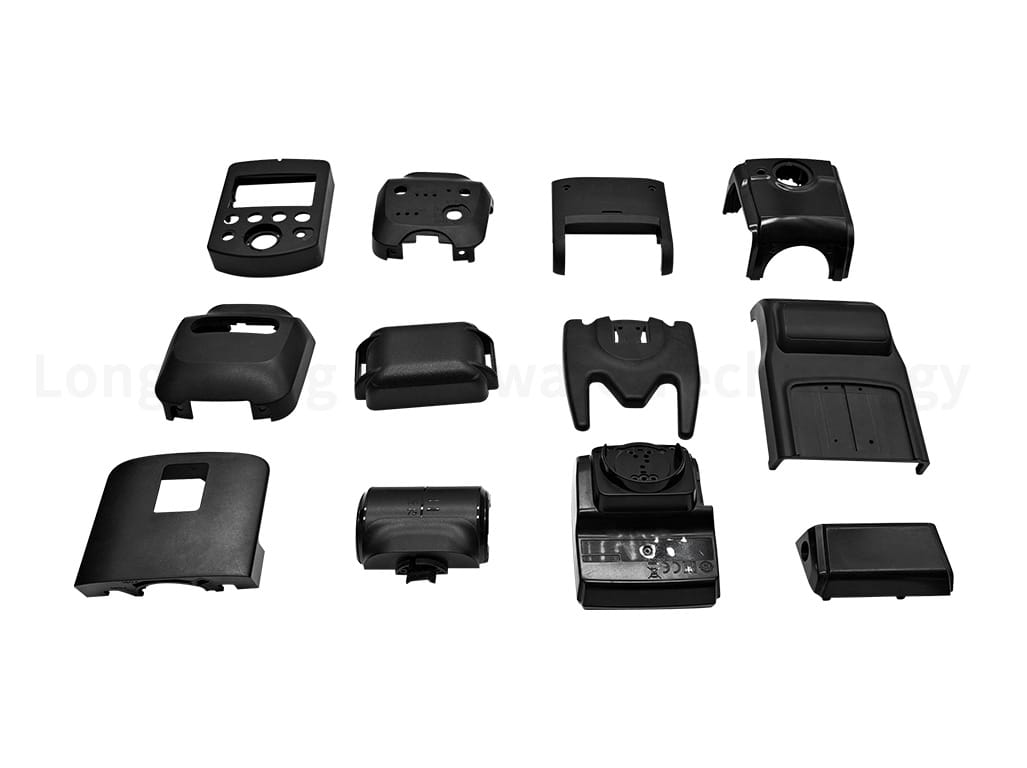
Plastics are still used in electronics, even though they do not conduct electricity. Injection molding is used to make electrical faceplates and other electronic devices.
Plastics are used in electronics because they are durable and have excellent electrical resistance. Injection molding applications include remote controls, computers, medical instruments, and televisions.
Agriculture
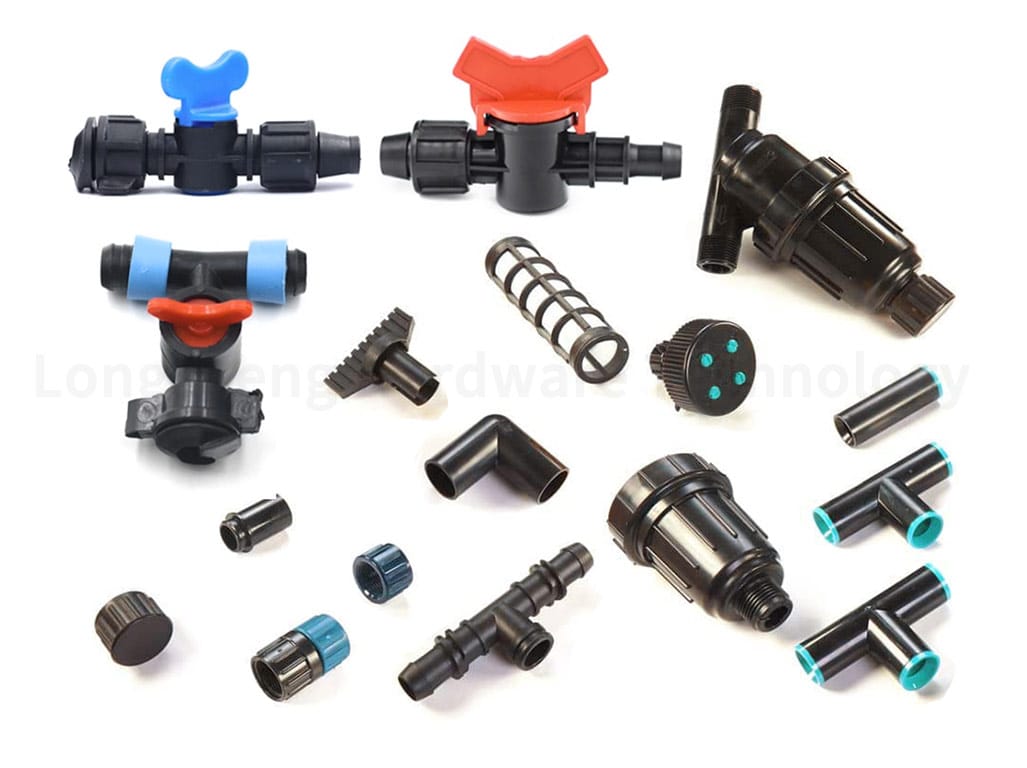
Injection-molded components are still needed by the agricultural industry, which is focused on producing food and drugs. Plastic injection molding products are used in the industry because they are durable and resistant to various environmental conditions.
Plastic injection molded parts offer several advantages to the industry—the farm benefits from the high resistance to corrosion. Unlike metals, plastics do not corrode due to environmental forces like rainfall. They are also lightweight, ensuring durability and reducing agricultural production costs.
Household
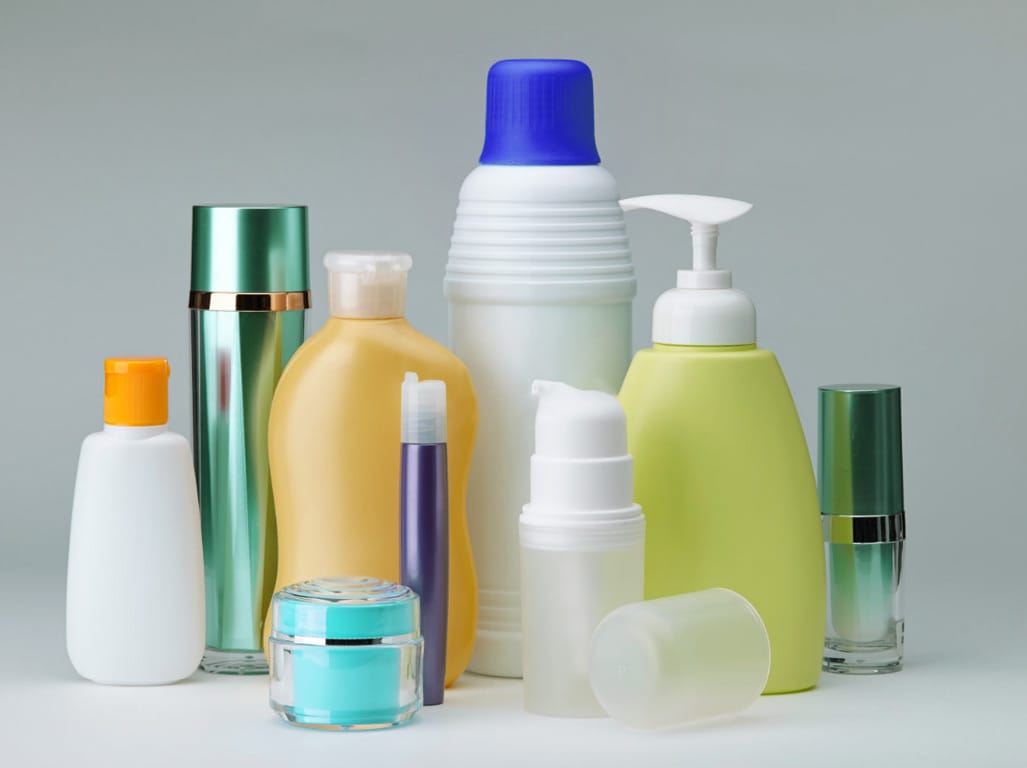
Injection molding is used to package most household products. Why do manufacturers use this process? Plastic products produced by injection molding are usually very durable. They are also resistant to temperature changes and the weather. The fact that they are recyclable helps to reduce production costs.
Other household products produced by injection molding include toilet seats, drinkware and accessories, and outdoor furniture. Injection molding is also used to create durable, colorful, easy-to-clean household items, such as children’s toys.
Consumer Goods
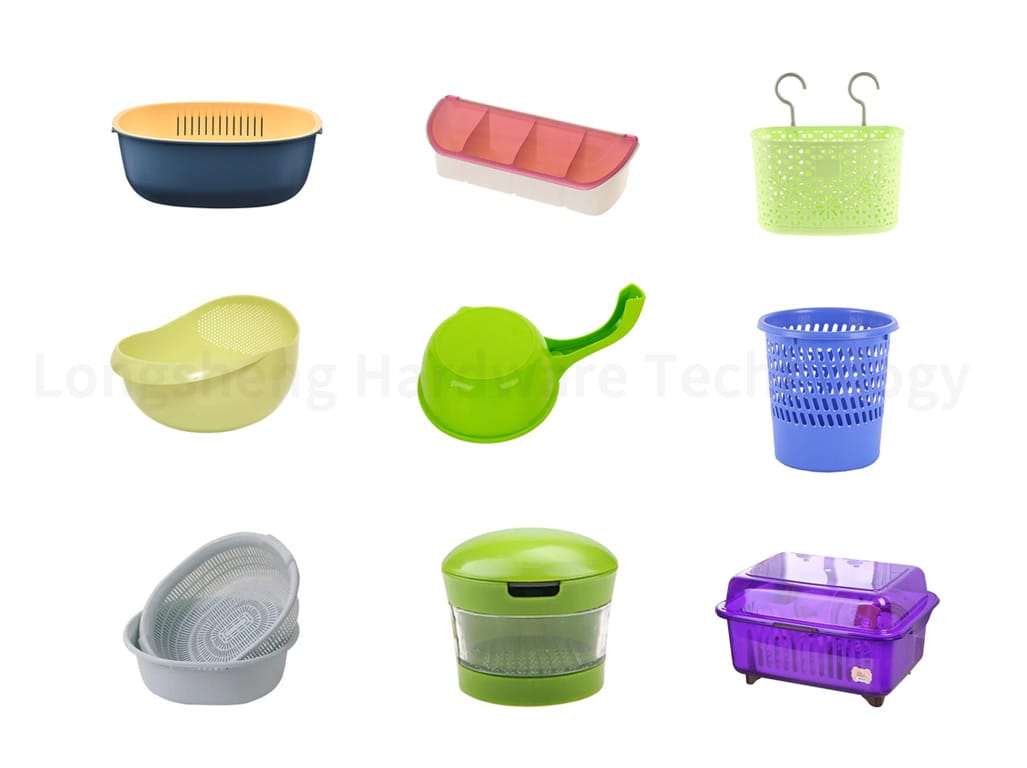
Injection molding is also used in the consumer goods industry to produce parts. Plastic bird feeders and skateboard storage shelves, for example, are durable plastic products. Cell phone cases, bakeware, and game controllers are other consumer products made by injection molding.
Outsource your plastic injection molding parts.
Plastics are used in many industries. Injection molding is a better way to make plastic parts than other methods. It would be best to outsource plastic manufacturing to a reliable, trusted manufacturing company to get high-quality products. LongSheng is one of the most reliable manufacturing companies for services.
LongSheng helps you design and create custom-made plastic parts that meet your specifications. We guarantee international standard plastics by combining our engineering team with top-notch injection mold techniques.
You can also track your product’s manufacturing in real-time. We offer a quick lead time, competitive pricing, and a flexible payment plan. When you choose our service, an exclusive project manager will follow your project through to completion to ensure you get the quality you want.
Could you let me know what you’re waiting for? You can upload your design on our platform for a free quote and competitive bulk pricing.


